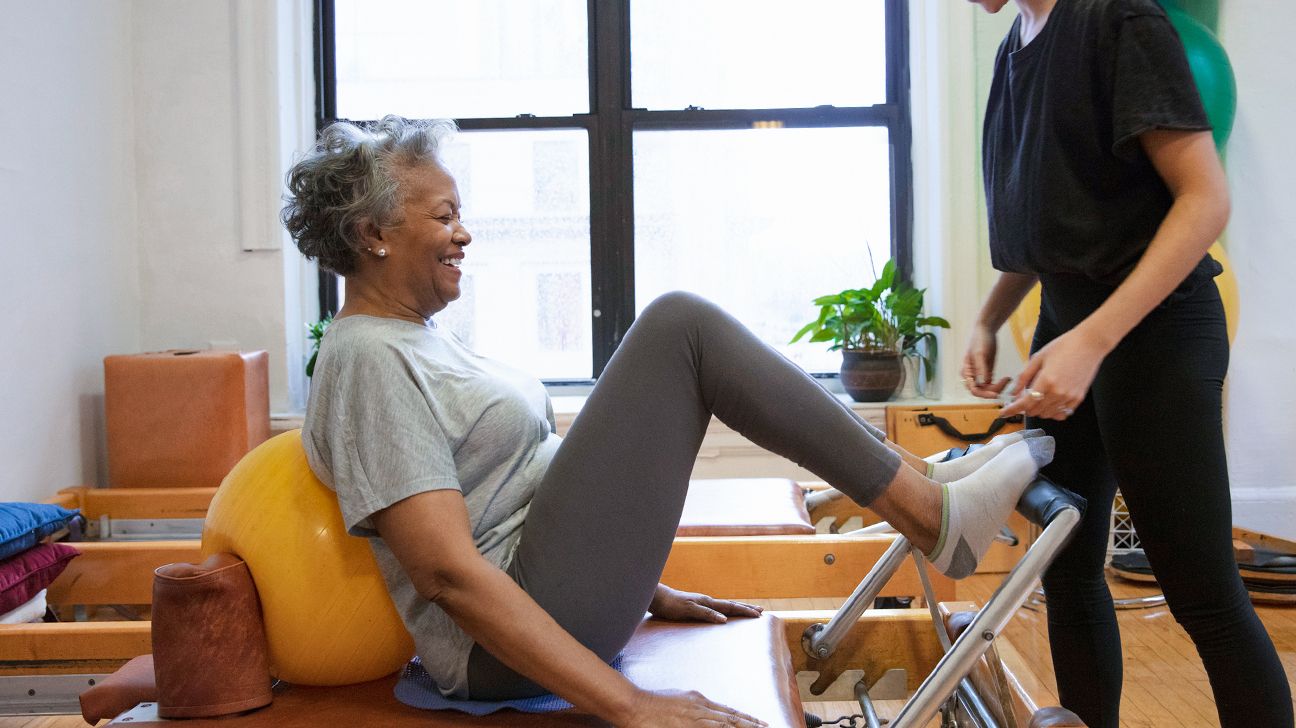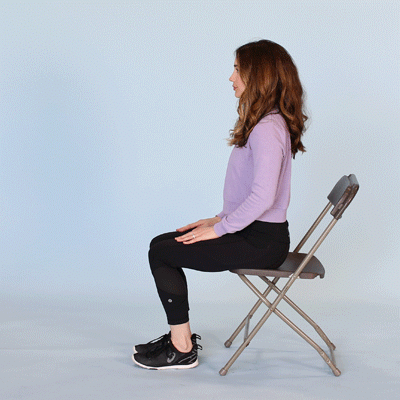Some exercises to help improve your osteoarthritis of the knee can be done seated, standing, or lying down. Variations may include adding weight, using resistance bands, or trying other exercises.

Treatment for osteoarthritis may include a combination of lifestyle changes, medications, and even surgery.
Exercise may also play a key role in managing pain, relieving inflammation, and increasing your range of motion, according to the
Keep reading to discover five exercises that could help increase your flexibility, balance, and strength.
Trainer’s tips
These exercises could help increase your range of motion and mobility, as well as build strong muscles to support painful joints caused by osteoarthritis.
However, it’s important not to push yourself too far. This may increase your risk of injury or cause further knee damage.
At first, perform these exercises without added weight. As you get stronger, try using a resistance band or ankle weights to increase the intensity.
It’s normal to experience mild discomfort and a “burn” in the targeted muscle while performing an exercise. But, if you experience moderate to severe pain in your knee joints, stop the exercise.

Strengthening the muscles around your knees could help prevent joint instability and allow for better movement in everyday life.
- Sit on a chair or table with your knee crease slightly over the edge.
- Extend one leg out straight, squeezing the thigh muscles at the top of the movement.
- Bend your knee all the way back, past a 90-degree angle, if able.
- Continue this movement for 20 repetitions. Repeat on the other leg, then rest for 1 minute. Repeat 3 sets for each leg.
If this movement feels too easy, try using ankle weights or doing the exercise on a leg extension machine. If the movement causes pain, try an alternative exercise for leg extensions.
Lying leg lifts work the quadriceps, hip flexors, and core muscles. They could be done anywhere by lying on a floor or bed.
- Lie flat on your back with your knees bent and feet flat.
- Extend one leg out flat with your foot flexed and toes toward the ceiling.
- Lift your leg up past a 45-degree angle, engaging the muscles along the front of the thigh.
- Hold one count at the top and slowly lower. Try to isolate the movement to just the leg, keeping your hips and body flat.
- Continue with 15 repetitions. Repeat on the other leg, then rest for 1 minute. Complete 3 sets on each leg.
Over time, you can try variations like side leg raises to help target different leg muscles.
Wall squats are a great exercise to help strengthen your legs and core, as well as to build muscular endurance.
- Place a large stability ball against a wall and lean against the ball, resting it in the small of your back.
- Place feet hip-width apart, approximately 2 feet away from the wall. Roll your shoulders back and look straight ahead.
- Slowly lower yourself down into a seated position, not lowering past a 90-degree angle.
- Squeeze your glutes and bring yourself back into a standing position, maintaining contact with the ball.
- Repeat 15 times, then rest for 1 minute. Repeat for 3 sets.
Hamstring curls could help strengthen your hamstrings and glutes, which play roles in moving your knee back.
- Stand and face a wall, or hold onto a chair for balance. Place your feet hip-width apart. Stand tall with your gaze forward.
- Bend one leg at the knee, bringing your foot up toward your buttocks and squeezing your hamstring. Don’t let your body rock back and forth as you do this movement.
- Repeat 20 times on each side, then rest for 1 minute. Complete 3 sets.
Learn more about hamstring curl alternatives.
Hip abduction exercises could help improve mobility, balance, and overall leg strength.
- Sit on the edge of a chair with your back straight, feet together, and hands on your thighs.
- Tie a resistance band or place a resistance loop band around your thighs, just above the knee.
- Bring your knees out to the side, squeezing through the outer glutes to initiate the movement.
- Repeat for 20 repetitions, then rest for 1 minute. Repeat for 3 sets.
Some low impact activities may also help improve your knee function and general health if you’re living with knee osteoarthritis. According to the
- yoga
- tai chi
- water-based activities, such as swimming
- cycling
- walking
The Centers for Disease Control and Prevention recommends getting at least
If you’re unsure about activities that may be good for your condition, speak with a physical therapist. They could help develop an exercise plan that meets your needs.
Learn more about 10 exercises for knee pain.
Resistance exercises are an excellent treatment option if you live with osteoarthritis.
Strengthening the muscles of the lower limbs may help support your joints and can ultimately lead to less pain and greater mobility.
If you still experience pain after trying an exercise program for knee osteoarthritis, speak with a healthcare professional. They could help develop a treatment plan that’s right for you.
Natasha is the owner of Fit Mama Santa Barbara and is a licensed and registered occupational therapist and wellness coach. She has been working with clients of all ages and fitness levels for the past 10 years in a variety of settings. She’s an avid blogger and freelance writer and enjoys spending time at the beach, working out, taking her dog on hikes, and playing with her family.
